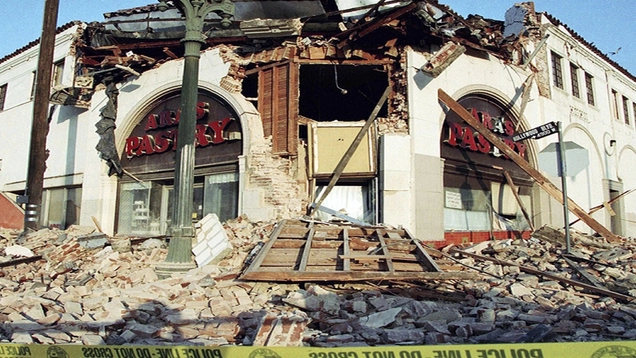
Thirty years ago, TODAY . . . the 1994 Northridge Earthquake occurred on January 17 at 4:31 a.m. in the San Fernando Valley area of the City of Los Angeles. This 6.7 magnitude severe event caused shaking was felt as far away as San Diego, Turlock, Las Vegas, and Ensenada, Mexico. Its peak ground velocity was the fastest recorded to date.
At least 57 deaths were immediately attributed to the early morning quake -- and it's considered likely that more would have lost their lives had it occurred during waking hours and not on a work holiday for many (Martin Luther King, Jr. Day). Northridge was, as of 1994, the site of one of the world's most expensive natural disasters, causing an estimated $35 billion in damage. Houses shook violently, but structures that sat side-by-side had different outcomes. Some stood undamaged, while others shifted off their foundation with dramatic structural damage.
Prepare your neighborhood before the next "BIG one"
CITY OF LOS ANGELES SOFT STORY RETROFIT PROGRAM
From past earthquakes, multi-story buildings with weak and/or open front wall lines creating a “soft-story” (i.e. buildings with tuck-under-parking) performed poorly and collapsed. The goal of the mandatory retrofit program, under Ordinance 183893 and Ordinance 184081, is to reduce structural deficiencies by the most economical and feasible method. Without proper strengthening, these vulnerable buildings may be subjected to structural failure during and/or after an earthquake.
Buildings that are most vulnerable have been identified with the following criteria:
- Consist of 2 or more stories wood frame construction
- Built under building code standards enacted before January 1, 1978
- Contains ground floor parking or other similar open floor space
The program does not apply to residential buildings with 3 or less units.
Los Angeles Department of Building and Safety
View the Safety Compliance Report
WHY RETROFIT YOUR HOME?
According to the California Earthquake Authority, the purpose of retrofitting for earthquakes is to keep your home from being displaced from its foundation—making the building safer and less prone to major structural damage during an earthquake.
WHAT ARE THE BENEFITS OF RETROFITTING?
Earthquake retrofitting (seismically retrofitting) a house is done to prevent displacement from the structure’s concrete foundation. This makes a building safer and less likely to suffer damage during an earthquake.
Retrofitting single-family homes is considered one of the cheapest seismic improvements available. A foundation bolting process usually costs a few thousand dollars and can be done within several days without the residents moving out.
WHAT DOES RETROFITTING COST?
While there isn’t a standard cost for earthquake retrofitting a home, the range is typically between $5,000 and $8,000. Larger homes, those built on hillsides, and those with basements or rooms over garages will typically cost more to retrofit. Many houses that require only bolting may cost slightly less.
WHY IS RETROFITTING NECESSARY?
Reason 1: Increase safety
Properly retrofitted houses are made stronger against earthquake shaking and damage. This means your house is safer, and you’ve reduced the chance of injury or even death in a devastating earthquake.
Reason 2: Financially protect your investment
You have invested a lot of time and money into your older house. Without a seismic retrofit, the repair costs you’d face after a damaging earthquake could be very costly. Think of it this way: it’s a lot cheaper to retrofit your house now than it is to repair it after an earthquake.
Reason 3: Make sure you have a place to live
If you have not seismically retrofitted your house and an earthquake damages it, it could take years to repair, and you may have to take out a loan to make repairs. Also, keep in mind that people often have to move out of their home during repairs, and rental costs typically go up in affected areas following a major disaster. That means you could be paying repair costs, rental costs, and your mortgage—all at the same time!